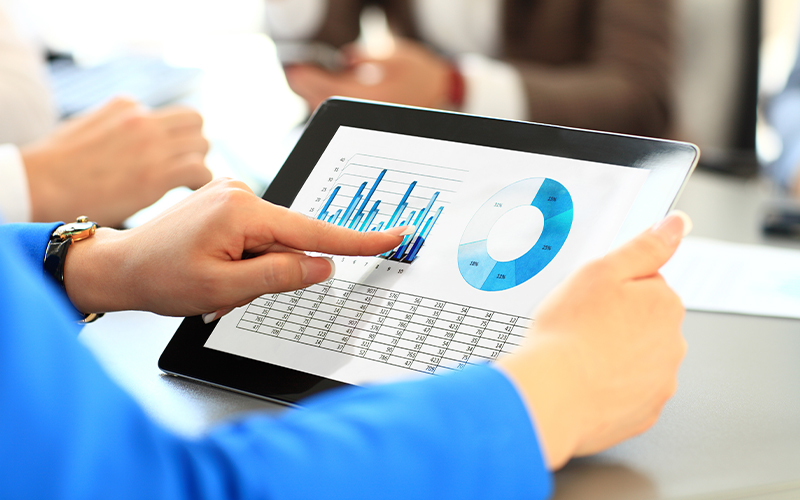Procurement and Spend analytics is one of the essential ways to achieve economies of scale in purchasing. On average, suppliers bill 0.5 – 1 per cent more than the contract stipulates they should. In some cases, such as transportation, the deviation is as high as 4 per cent.
This creates a discrepancy in the perceived vs actual savings of a company. This puts the purchasing department under pressure. If you have investments from venture capitalists or angel investors, such results reduce their confidence in your business to continue further funding.
This is where spend analytics in procurement helps.
What is spend analysis?
The goal of spend analytics is to improve supplier relationships, reduce costs, and increase efficiency. With spend analysis, you typically collect, classify, clean, and analyse procurement data. The exercise helps answer the following questions –
- Who are you purchasing from?
- What are you purchasing?
- Are your suppliers delivering the quality and quantity promised?
- When are you placing the orders?
- Where are you using the purchased items or services?
- Why are you buying certain items and working with specific suppliers?
- How much are you buying?
These questions are difficult to answer in a large organisation with multiple branches procuring from hundreds of suppliers globally. This brings us to the necessity for procurement and spend analytics systems.
Benefits of spend analytics in procurement
From increasing efficiency to saving costs to forecasting risks to your business, procurement and spend analytics has numerous benefits.
High efficiency
Businesses spend only 20 per cent of their time on strategy and 80 per cent on other low-value tasks of collecting data into reports and operations. Automated procurement data analysis increases efficiency and gives you more time for high-value strategic activities.
End-to-end visibility
The spend analytics in procurement system works 24/7 to provide you with a real-time overview across the organisation. Therefore, your procurement decisions are not reactive but proactive. The system shares insights with and works across functions such as finance, manufacturing, and IT.
Prioritisation of resources
Businesses must know how to allocate and prioritise their resources and control unexpected spending. Prioritising critical categories for spending in the business and identifying smaller categories with large potential is crucial so you can allocate resources appropriately.
Category management
Categories management group similar products or services together. Use spend analytics to create a category structure based on data. Use procurement and spend analytics to create a category structure based on data. This allows you to organise procurement resources and focus on the most important areas.
For example, an apparel business could categorise all suppliers that supply T-shirts. If the demand for T-shirts increases, the business can put this category of suppliers on top.
Internal benchmarking
Spend data lets you improvise internal processes. For example, if the loyalty of suppliers and contracts is higher in Department A than in Department B, you can analyse the causes. Using this information, you can improve contract loyalty in other departments also.
Saving opportunities
These factors in spend analytics help you identify potential savings –
- The number of suppliers in each category
- The supplier’s financial health and your importance as a client
- Price arbitrage
- The level of maverick spend or deviation from contract rates
- Working capital and payment terms optimisation
- Prices of goods and services with high volumes
Better data quality
Traditional spend analytics systems rely on the data you feed. This could introduce errors and discrepancies that give inaccurate results. Using AI-powered procurement and spend analytics, your business can ensure holistic digital transformation through highly accurate data.
AI-based procurement and spend analytics systems ingest, cleanse, and deduplicate the data before classifying it within the system.
Rationalise the supplier base
Some suppliers may be on the verge of bankruptcy and may underperform, exposing your business to risk. A certain supplier may not have enough products to help you in the long term.
It is imperative for every medium or large business to periodically review its supplier base and know the spending on each supplier and the cost of the process.
Identify risk
Rogue or maverick spend is as high as 20 per cent in businesses. If you do not detect it, your business can lose significant money and be disadvantaged. The suppliers also tend to undermine the contract terms and negotiated rates.
Spend analytics in procurement empower your teams to make informed decisions about risk exposure. It also highlights fraud and out-of-policy and unauthorised spending.
For organisations on the digital transformation journey, agility is key in responding to a rapidly changing technology and business landscape. Now more than ever, it is crucial to deliver and exceed organisational expectations with a robust digital mindset backed by innovation. Enabling businesses to sense, learn, respond, and evolve like living organisms will be imperative for business excellence. A comprehensive yet modular suite of services is doing precisely that. Equipping organisations with intuitive decision-making automatically at scale, actionable insights based on real-time solutions, anytime/anywhere experience, and in-depth data visibility across functions leading to hyper-productivity, Live Enterprise is building connected organisations that are innovating collaboratively for the future.
how can Infosys BPM help with spend analytics in procurement?
The ProcureEdge platform ensures a 360-degree transformation of your procurement process. The AI-enabled technology ingests, cleanses, and deduplicates before categorising the information that gives accurate results. Procurement and spend analytics is made seamless with these solutions.
Read more about AI-enabled spend analytics services at Infosys BPM.








